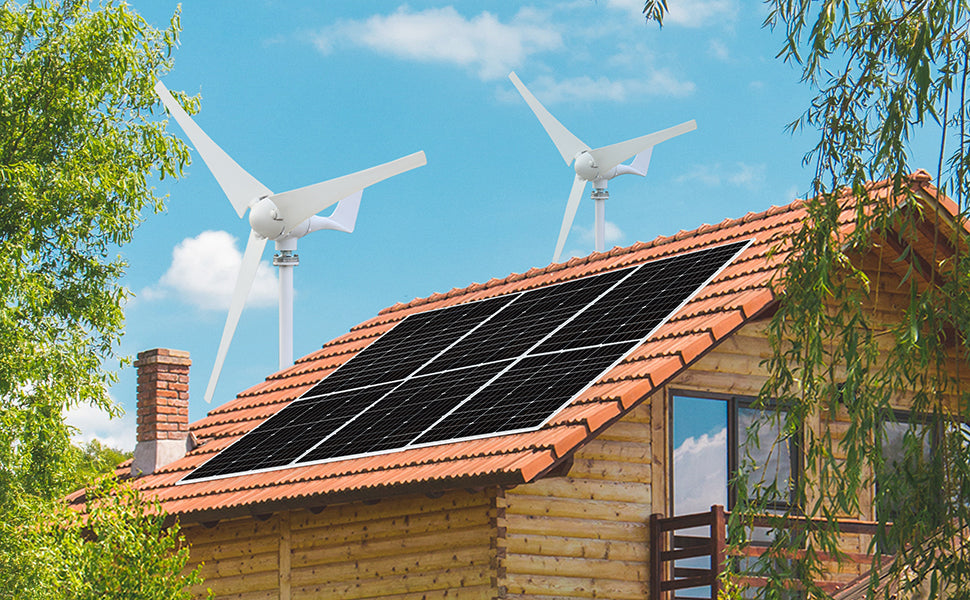It is essentially like any regular security camera except that it is powered by solar energy. Because of this, it does not require installation of electric cables or payment of monthly subscription fees to a security service provider.
A solar powered security camera comes with a miniature solar power system. This usually includes one or more small solar panels, rechargeable batteries and a small capacity solar inverter. Other features which may be included are spotlight, Wi-Fi connection, SIM card, SD card and so on.
How does a solar-powered security camera work?
The small solar panels which come with a solar-powered security camera are often high grade. Photovoltaic cells in the panels capture solar energy to generate direct current (DC).
The solar inverter then converts the DC to alternating current (AC), which can be utilized to power the camera and to charge the batteries. When there is no sunlight or too little of it, the camera draws power from the batteries.
Advantages of solar-powered security cameras
1. Solar security cameras can be used anywhere
Since solar-powered security cameras don’t need cables or the power grid to work, it can be used for off-grid buildings, in the most remote locations or in geographically challenging environments. These are the places where pulling miles of cable for conventional security cameras will be simply impossible or cost too much.
Solar-powered security cameras are now being used by those living in mobile homes such as tiny houses, RVs, boats, vans and trucks. These homes tend to cater to off grid living where every bit of power is precious. Thus, self-powering security cameras are favoured.
2. Easy installation of solar security cameras
These cameras are self-sustained units and don’t need any wiring to the grid. Installation is as easy as screwing them onto wherever they need to be.
3. Solar security cameras are environmentally friendly
Sunlight is a renewable, free energy. Running the cameras does not cause added pollution since it does not require the power grid and its battery is constantly recharged by this free energy.
4. Easy scalability of solar security cameras
Because every unit is a standalone, it is easy to add any number of cameras without needing to add infrastructure.
5. Solar security cameras have a long lifespan
Most solar panel manufacturers give a 25-year standard warranty. Even after 25 years, the solar panel can still produce about 80% of power for the camera.
Are there incentives for solar-powered security cameras?
Many countries encourage the adoption of photovoltaic technology to reduce their carbon footprints. Each country has different kinds of incentives such as tax credits, rebates, FIT programs and so on. Solar-powered security cameras are not exempt from such incentives since they are considered a solar product.
What to consider when buying solar powered security cameras
1. Solar panel capacity of the solar security camera
The solar panel that comes with the security camera should produce enough electricity to power the camera for up to 8 hours of the day. At the same time, it should also be able to charge the battery sufficiently.
To ensure the solar panel efficiency is at its optimal, ensure that nothing will block the photovoltaic (pv) panel from direct sunlight. Position the pv panel to face true south if you’re in the northern hemisphere or true north if you’re in the southern hemisphere.
Weather conditions such as snow and dark clouds can reduce a solar panel’s efficiency, so giving it the best angle will help.
2. Battery size of the solar security camera
The solar security camera should come with rechargeable batteries that are used to power the camera when sunlight is unavailable. The storage capacity of the battery should be at least 10 times that of the solar panel’s maximum output. Otherwise, the battery might become damaged from overcharging.
The average charging time is about 6 to 8 hours. This stored power should last from 1 week to over 3 months without additional charging. Of course, this is possible only for cameras that actively record when the motion detector is triggered or when the user connects to the camera.
The storage capacity of the battery is measured in milliamperes per hour or mAh. The more features the camera needs to power the bigger the required battery capacity.
To learn more about photovoltaic power generation, please follow SOLARPARTS official website:
Twitter: Solarparts Instagram: Solarparts
Tumblr: Solarparts Pinterest: Solarparts
Facebook: Shenzhen Solarparts Inc
Email address: Philip@isolarparts.com
Homepage: www.isolarparts.com




